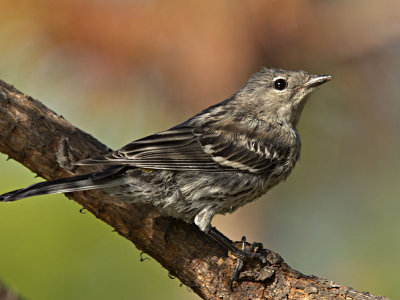
If you can add to the list please send an e-mail to Dan. Here is the list of birds he's identified during that time, with a few others that other people have seen. Although the reasons for its decline are unknown, destruction of these canebrakes is the most likely reason for its demise.Recently Dan Jackson realized that he had found a total of 200 species of birds in Myrick Park and Hixon Forest in the last 15 years or so. Historically occurring in the southeastern United States, this little known species is thought to have been dependent upon canebrakes on its breeding and wintering grounds in Cuba. The Bachman’s Warbler is an enigmatic species considered to be extinct by most authorities although slim hopes for its continued existence are kept alive by a few possible sightings over the last thirty years. Brown-headed Cowbird populations are also controlled on its breeding grounds. Its habitat is managed for this species in a few national forests by ensuring that there are Jack Pine stands of the age and composition this species requires.


The Kirtland’s Warbler is an endangered species restricted to a very specific type of habitat mostly found in Michigan Jack Pine forests. While the waterthrushes forage on the ground in streams and wetlands, and the Black-and-white Warbler creeps along tree trunks, most wood-warblers glean the vegetation of trees and bushes and make short sallies for their insect prey. They forage in a variety of ways for invertebrates, small fruits, and nectar. Members of the Parulidae are not colonial nesters but often occur in mixed flocks with other species after the breeding season. Most species of wood-warblers are long distance migrants to Central and South America. Several species can reside in the same area, yet avoid competition by occupying slightly different habitats or feeding in different ways. The many species of this family have evolved to fill a wide variety of niches including marshes (yellowthroats) to tree trunks (the Black-and-white Warbler), and spruce forests (the Cape May Warbler). The wood-warblers occur throughout North America except for the far northern tundra. In addition to having bright yellow in their plumages, males in bright breeding plumage can show orange, blue, grays, and handsome patterns of black and white. Different shades of yellow and olive occur in many species, including the dull, brown, streaked plumages of females and immatures. The Yellow-rumped Warbler is the only warbler able to digest. Myrtle and Audubon's Warblers hybridize in the southern Canadian Rockies and based on this and DNA evidence, the two were combined into a single species. Members of the Parulidae come in a variety of colors. Until 1973 the Yellow-rumped Warbler was considered two species: the Myrtle Warbler in the East, and Audubon's Warbler in the West. They have short to longish wings (in migratory species), and medium length, thin, pointed bills. Like several other Passerines, the wood-warblers are small birds with medium length tails, medium length legs and strong feet suited to perching.

However while many species are known for their beautiful breeding plumage colors, they are also known to bird watchers as being extremely challenging to identify when in the fall they revert to their drab tan, olive, and pale colored plumages. The wood-warblers are known for their colorful plumages – the Blackburnian Warbler being one of the most striking members of this family with its deep orange-red throat that contrasts with its handsome black and white plumage. North America has ninety species of wood-warblers in twenty-six genera included in this family are the yellowthroats, a seemingly dizzying array of warblers, and the waterthrushes. The wood-warblers, or Parulidae (pronounced pah-ROO-luh-dee), are a large family of one hundred and twenty-two species in twenty-six genera that only occur in North and South America. The wood-warblers are one of the one hundred eighteen families of birds in the order PASSERIFORMES (pronounced pas-ser-i-FOR-meez) a large taxonomic order that includes other small perching birds such as the vireos, the white-eyes, and the tanagers.


 0 kommentar(er)
0 kommentar(er)
